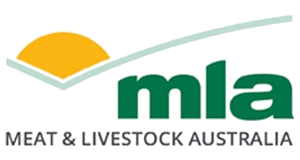Wellington Resilient Business Group
| Project start date: | 23 July 2010 |
| Project end date: | 17 April 2013 |
| Project status: | Completed |
| Livestock species: | Grass-fed Cattle, Sheep, Lamb |
| Relevant regions: | National |
|
Download Report
(1.4 MB)
|
|
Summary
A big challenge identified by producers is on farm stock water supply over the last 10 years. Variable rainfall has meant that stock water has become a major limiting factor to sheep/beef production and stock numbers being able to be maintained.
This Producer Demonstration Site (PDS) sought to develop an on-farm demonstration of the commercial installation and use of remote monitoring of stock water using telemetry. It gathered information to be able to help assess the economic and other costs and benefits. Until now, there were no demonstration sites in the Central West of NSW for this technology.
The trial showed that telemetry is a viable cost saving technology, from both a practical “does it work” perspective, as well as having a short payback period (short time to break even on the investment). It can also create significant time savings, allowing producers to spend time on more productive activities.
Objectives
This PDS documented the costs of installation, identified potential issues and challenges, and sought to monitor the impact of the technology on the costs and time savings on one group member’s property. It also assessed the practicality of the technology in hilly and timbered areas and where mobile services were not available.
Progress
The trial showed that while the technology was fairly robust, the landholders needed time to develop trust in the system. As confidence was gained in the system, less physical checks were made, and savings in time and vehicle costs became substantial.
The usefulness of the telemetry was dependant on how much the technology could be trusted to provide the early warning monitoring required.
Allowing for wages, fuel costs and vehicle wear and tear, the payback period was less than one year. The intangible benefits include the ability to leave the farm and be confident that stock water is adequate, through the ability to check this on a smart phone; while at meetings, field days or time off.
Alarms can be set, so that if water levels fall below early warning monitoring point, a text message can be sent to a number of designated phones. The portable camera allowed stock to be monitored “real time” without driving out to see them.


